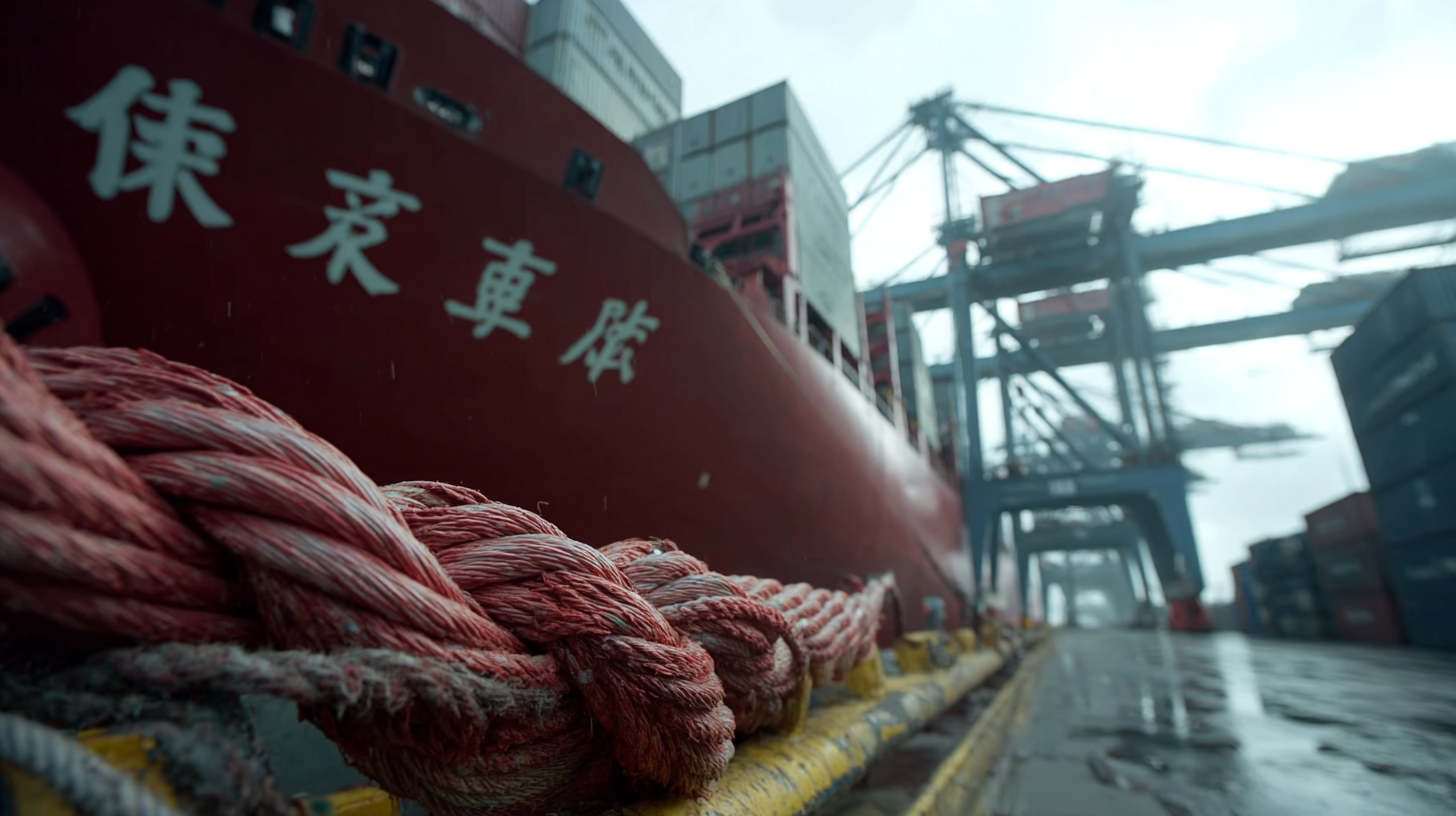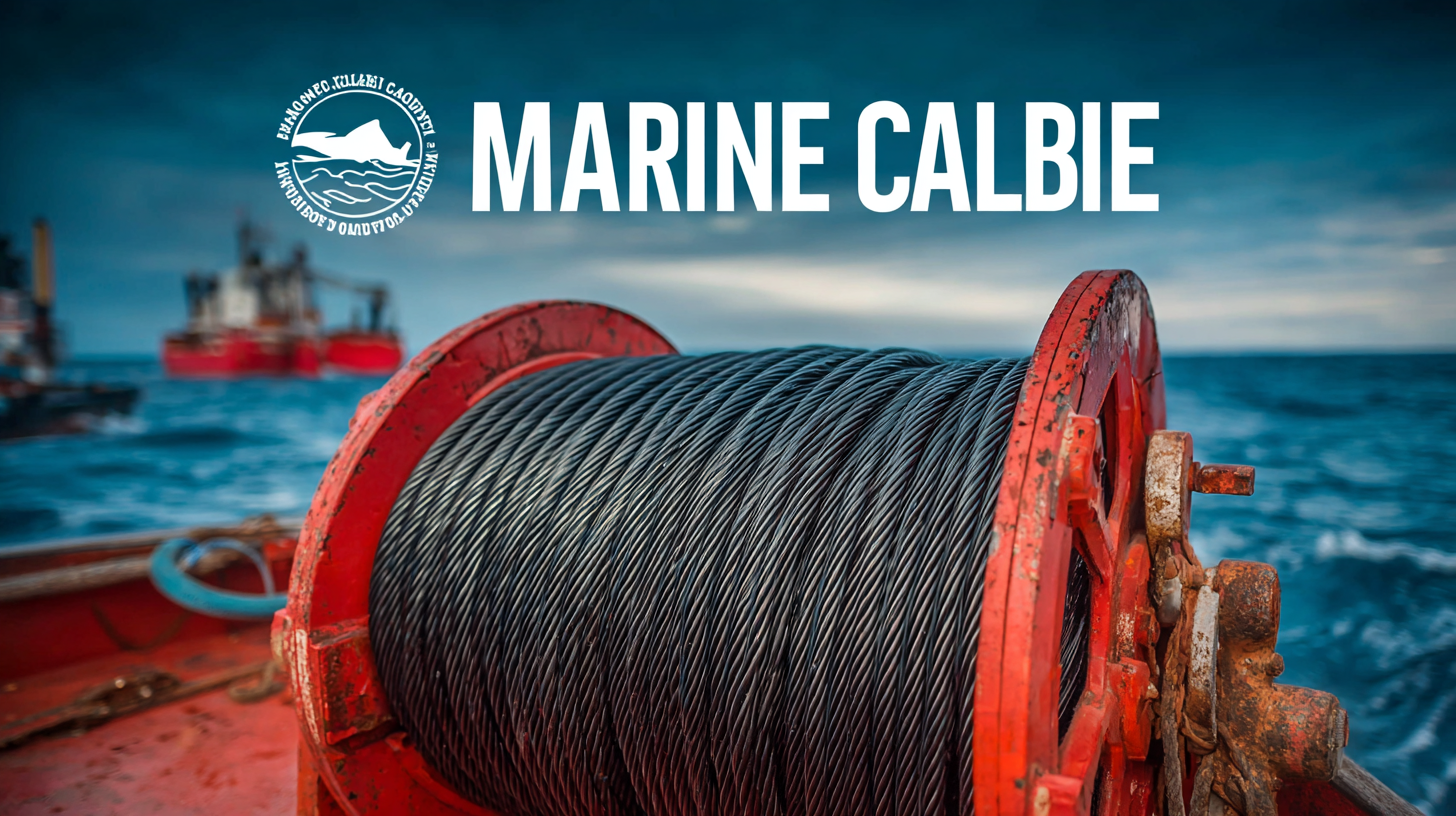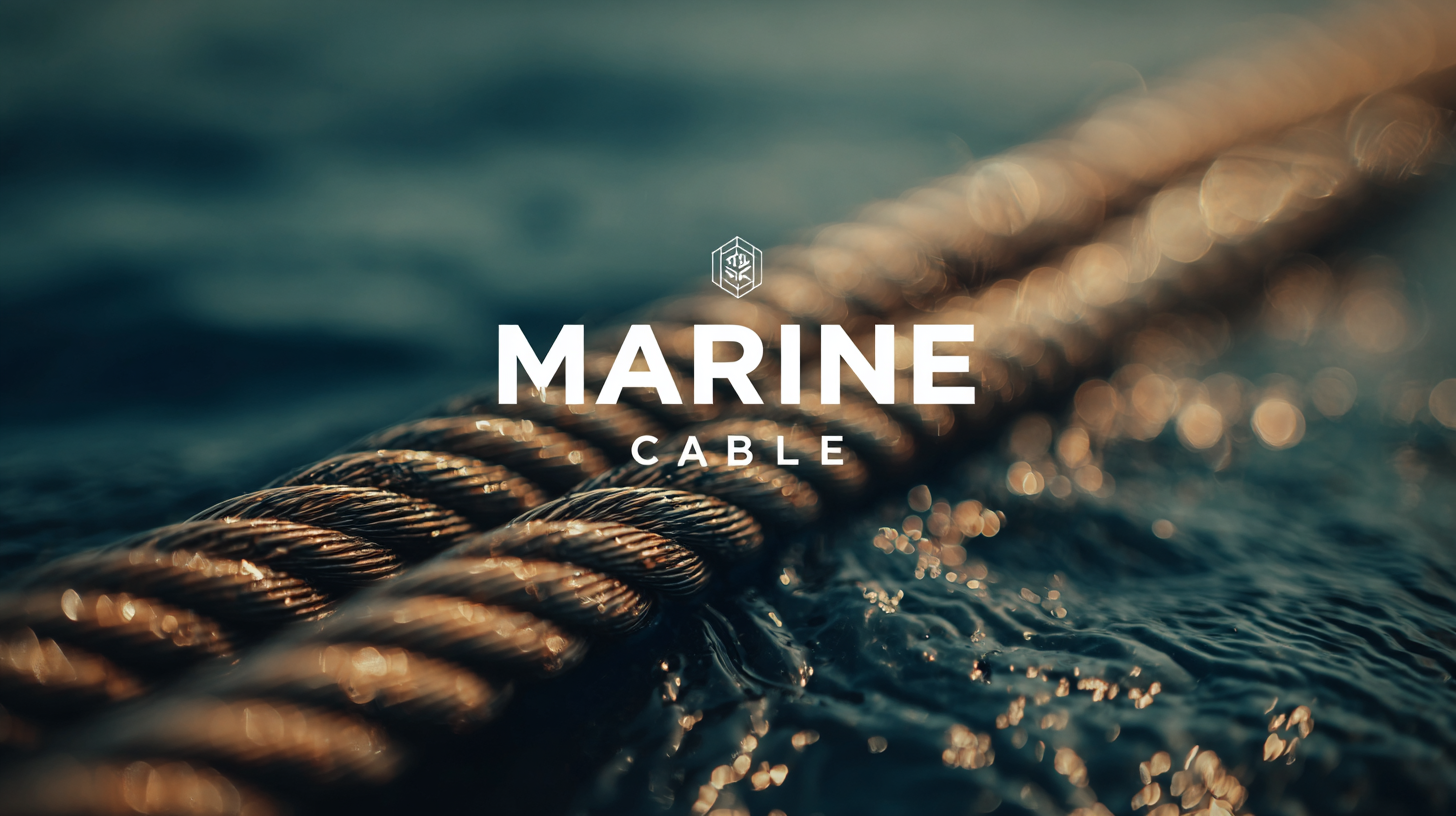China's Commitment to Quality in the Global Marine Cable Market
In recent years, China's commitment to quality has significantly reshaped the global marine cable market, positioning the nation as a formidable player in the industry. As we look towards the technological trends set to define 2025, the importance of high-performance marine cables has become increasingly evident. These cables not only facilitate vital underwater communication and energy transmission but also enhance the operational efficiency and reliability of various marine applications. In this blog, we will explore how China's advancements in engineering and manufacturing standards are setting new benchmarks for quality, while delving into "how to" leverage these innovations to meet future demands. As we navigate through these developments, it is crucial to understand the implications of these trends on global markets and environmental sustainability in the marine cable sector.

China's Investment in Innovative Marine Cable Technologies
China has increasingly positioned itself as a leader in the global marine cable market, largely driven by substantial investments in innovative technologies. The country is focusing on developing advanced materials and manufacturing techniques that promise not only improved performance but also enhanced durability of marine cables. Innovations such as lightweight, high-strength fibers and smart cable systems that monitor performance in real-time exemplify China's commitment to pushing the boundaries of traditional cable design.

Furthermore, China's emphasis on research and development in marine cable technology reflects a strategic aim to reduce dependency on international suppliers and bolster its domestic capabilities. With state-of-the-art production facilities and strategic collaborations with research institutions, Chinese companies are actively exploring solutions that can withstand the harsh conditions of underwater environments. This initiative not only supports the nation's growing telecommunications infrastructure but also aligns with global sustainability goals, as newer technologies aim to minimize environmental impact while maximizing efficiency.
The transformation in the marine cable industry underscores China’s ambition to lead in high-tech sectors and meet the increasing global demand for robust marine connectivity solutions.
The Role of Quality Standards in China's Marine Cable Production
China has emerged as a significant player in the global marine cable market, a field where quality standards are paramount. The country’s commitment to adhering to stringent quality benchmarks is essential for ensuring the reliability and safety of marine cables, which are vital for communication, energy transmission, and offshore operations. China's manufacturing sector has increasingly aligned itself with international quality standards such as IEC and ISO, which not only bolster product credibility but also enhance competitiveness in a crowded marketplace.
Moreover, the implementation of rigorous quality control processes throughout the production stages is fundamental in maintaining high standards. This includes investing in advanced testing technologies and training skilled labor to ensure that every batch of marine cables meets or exceeds international expectations. By prioritizing quality, Chinese manufacturers not only cater to domestic demand but also position themselves as trusted suppliers for global markets. This focus on quality assurance not only strengthens China's reputation but also fosters long-term partnerships with clients worldwide, underscoring the transformative role of quality standards in the marine cable industry.
Case Studies: Successful Marine Cable Projects from China
China has made remarkable strides in the global marine cable market, showcasing its commitment to quality through various successful projects. One notable example is the Asia-Africa-Europe 1 (AAE-1) submarine cable system, which spans over 25,000 kilometers and connects several countries across three continents. This project not only boosts connectivity but also enhances internet speeds and reliability for regions that were previously underserved. Through meticulous planning and execution, China's engagement in this project demonstrates its leadership in marine technology.
Another exemplary initiative is the South East Asia – Middle East – Western Europe 5 (SEA-ME-WE 5) cable, which emphasizes the nation’s capacity to handle sophisticated telecommunications infrastructure. This project involved substantial collaboration with international partners and has significantly strengthened digital links between Asia and Europe. The investment in cutting-edge technology and adherence to rigorous quality standards position China as a pivotal player in the marine cable sector.
Tips for ensuring successful marine cable projects include prioritizing collaboration among international stakeholders, rigorous testing of cable technology before deployment, and ongoing maintenance plans to address potential disruptions. Emphasizing these factors can lead to not only successful project completion but also long-term sustainability in the ever-evolving digital landscape.
Marine Cable Project Success Rates by Type
How China is Shaping Global Marine Cable Supply Chains
China has emerged as a formidable player in the global marine cable market, significantly shaping supply chains through strategic investments and production capabilities. According to a report by Market Research Future, the global submarine cable market is expected to reach USD 21 billion by 2025, driven largely by the demand for enhanced internet connectivity and data transfer capabilities. China's marine cable production has seen substantial growth, with companies like Huawei and ZTT Corporation leading the charge, contributing to approximately 40% of the global market share.
Moreover, China's commitment to quality and innovation in marine cable technology is evident through its continuous R&D investments. A 2022 report from the International Telecommunication Union highlighted that China’s deployment of advanced cable-laying vessels and cutting-edge manufacturing processes results in cables that not only meet but often exceed international standards. This focus on quality ensures the reliability and longevity of marine cables, which are crucial for supporting global telecommunications infrastructure. As China continues to enhance its role in the marine cable supply chain, it is set to influence pricing, technology adoption, and competitive dynamics within the industry.
China's Commitment to Quality in the Global Marine Cable Market
| Category | Data Point | Quality Standard | Market Share (%) | Growth Rate (Annual %) |
|---|---|---|---|---|
| Production Volume | 250,000 tons | ISO 9001 | 35% | 12% |
| Export Value | $1.5 Billion | IEC 60502 | 30% | 10% |
| Local Supply Chain Efficiency | High | ASTM D3039 | 40% | 15% |
| R&D Investment | $200 Million | GB/T 17219 | 25% | 8% |
| Sustainability Certifications | 4 | ISO 14001 | 20% | 5% |
Future Trends in China's Marine Cable Industry and Global Impact
China's marine cable industry is poised for significant growth in the coming years, driven by innovative policies and technological advancements. Recent reports indicate that the global marine cable market is expected to see continued expansion, with over 1.39 million kilometers of undersea cables currently in operation. The ongoing digital transformation in sectors like oil and gas, along with marine observation, is generating new demands for submarine fiber optic cable installations.

In particular, there has been substantial progress in high-voltage submarine power cables, with domestic companies successfully developing core technologies for 500 kV ultra-high voltage cables. This aligns with China’s broader goals of enhancing its infrastructure to support renewable energy sources, particularly offshore wind power. The launch of the world’s first 16-megawatt offshore wind turbine marks a new milestone in China's capacity to manufacture and operate large-scale renewable energy solutions, further spotlighting the importance of marine cables in energy transmission and communication.
Moreover, policies favoring the submarine cable industry are being implemented across various provinces, fostering a conducive environment for growth. This not only emphasizes China’s commitment to quality and innovation in this sector but also highlights its potential impact on the global marine cable landscape as international demand continues to rise.
